Entries in Natural Philosophy (39)
The Light Fantastic
 Sunday, April 11, 2010 at 9:50PM
Sunday, April 11, 2010 at 9:50PM  Untitled (Girl) by Zabka Britton. White light transmission, film. 5 in x 4 in. 1980-1981.
Untitled (Girl) by Zabka Britton. White light transmission, film. 5 in x 4 in. 1980-1981.
Tigirl by Margaret Benyon. Reflection hologram, glass. 16 in x 12 in. 1985.
 The Kiss by Lloyd G. Cross. 120° integral stereogram (Multiplex), film. 9 1/2 in x 30 in. 1973.
The Kiss by Lloyd G. Cross. 120° integral stereogram (Multiplex), film. 9 1/2 in x 30 in. 1973.
 Lindow Man by Richmond Holographic Studios Ltd. Reflection hologram, glass. 12 in x 16 in. 1987. Green image showing the remains of a mummified, Iron Age man, dating to approximately 55BCE, found in a peat bog near Wilmslow, England in 1983.
Lindow Man by Richmond Holographic Studios Ltd. Reflection hologram, glass. 12 in x 16 in. 1987. Green image showing the remains of a mummified, Iron Age man, dating to approximately 55BCE, found in a peat bog near Wilmslow, England in 1983.
 Parc des Folies a la Villette by A. P. Holographie. White light transmission, film. 38 in x 40 in. Circa 1983. 3-D architect's model, produced to promote this science park in Paris; rainbow-colored image.
Parc des Folies a la Villette by A. P. Holographie. White light transmission, film. 38 in x 40 in. Circa 1983. 3-D architect's model, produced to promote this science park in Paris; rainbow-colored image.
Selections from the MIT Museum exhibit: Holography: The Light Fantastic, "an awe-inspiring sampling of twenty-three historic holograms from the MIT Museum holography collection—the world's largest. Scientific and artistic applications of holography in diverse fields such as medicine, engineering, and retailing as well as architecture, portraiture and abstract art are represented."
 Holography,
Holography,  MIT
MIT The Photonic Beetle
 Tuesday, March 23, 2010 at 12:53AM
Tuesday, March 23, 2010 at 12:53AM 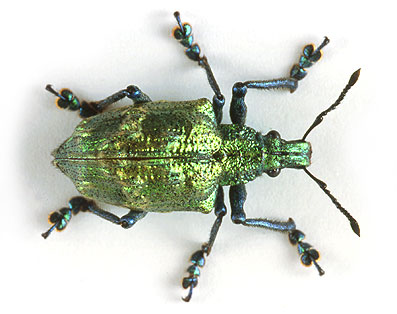
From the October, 2008 issue of Semiconductor International:
The proverb admonishes, “Look to the ant, thou sluggard, consider her ways and be wise.” The same sentiment can be applied to another member of the Insecta class, a green iridescent Brazilian beetle with the unwieldy moniker of Lamprocyphus augustus. Just by doing what comes naturally, this inch-long weevil has accomplished a task that to date has eluded the Hominidae class's best researchers: the evolution of a structure considered as the ideal architecture for the long-sought-after photonic crystal.
To produce ultrafast optical computers, it is first necessary to produce an ideal photonic crystal that will enable exacting manipulation of light. Currently, light in near-infrared and visible wavelengths carries data and communications through fiber-optic cables, but this photonic information must be converted back to electrons before it can be processed by a computer.
“Photonic crystals are a completely new class of optical materials that enable the manipulation of light in non-classic ways,” explained Michael Bartl, assistant professor of chemistry and adjunct professor of physics at the University of Utah (Salt Lake City). “Some colors [wavelengths] of light can pass through such a crystal at various speeds, while others are reflected as if the crystal were acting as a mirror.”
The Museum of Nature
 Monday, March 22, 2010 at 4:51PM
Monday, March 22, 2010 at 4:51PM  Roller-coaster, by Ilkka Halso, 2004.
Roller-coaster, by Ilkka Halso, 2004.
 Museum I, by Ilkka Halso, 2003.
Museum I, by Ilkka Halso, 2003.
 Kitka-river, by Ilkka Halso, 2004.
Kitka-river, by Ilkka Halso, 2004.
 Theater I, by Ilkka Halso, 2003.
Theater I, by Ilkka Halso, 2003.
From Ilkka Halso's press release for Museum of Nature:
IN ORDER TO PROTECT AND RESTORE NATURE WE NEED STRONGER MEANS. ILKKA HALSO HAS CONTINUED HIS CONQUEST IN ORDER TO SAVE THE WORLD. HE PRESENTS PLANS FOR BRIGHTER AND MORE DURABLE MILLENNIUM.
Museum of Nature is next step in continuum of imaginative nature restoring project, which started year 2000 as Restoration exhibition. Restoration series was about restoring single nature objects in means of technology and building skills. Museum project takes one step further. I make plans and construct visually buildings, which protect nature from treaths of pollution and what is more important from actions of man himself. I visualize shelters, massive buildings where big ecosystems could be stored as at present. These massive building protect forests, lakes and rivers from pollution and what is more important from actions of man himself. At the same time I study different aspects of mans relation to nature as rare unique endangered place. While putting nature into a museum you have to take under consideration aspect of audience/consumer. Nature becomes joyride for turists or beautyfull landscape turns into a meditative theatre show. Project is based on pessimistic vision of what is happening on earth. I am looking into future and I am not very happy about that. I am considering these pictures more as visual pamphlets than estetical images. Digital process is constantly present in the works. I am combining freely photographs of landscapes and computer genereted 3D-models. Works are visualized building plans, plans I rather not want to see realized.
— Ilkka Halso
Aesthetics of Microfluidics, Part 1
 Thursday, March 18, 2010 at 12:44AM
Thursday, March 18, 2010 at 12:44AM
I am interested in the extended and recontextualized meanings of industrial media, as a possible mirror image of the media industry. This short video by Formulatrix demonstrates their product, "the Formulator", and its "microfluidic chip dispensing a 96-well plate".
Early Crystallographic Models
 Wednesday, March 17, 2010 at 11:00PM
Wednesday, March 17, 2010 at 11:00PM 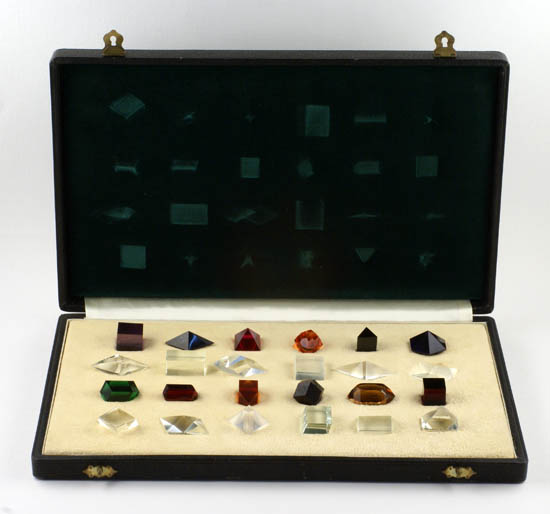 Colored glass models, Unsigned, first half 20th century
Colored glass models, Unsigned, first half 20th century
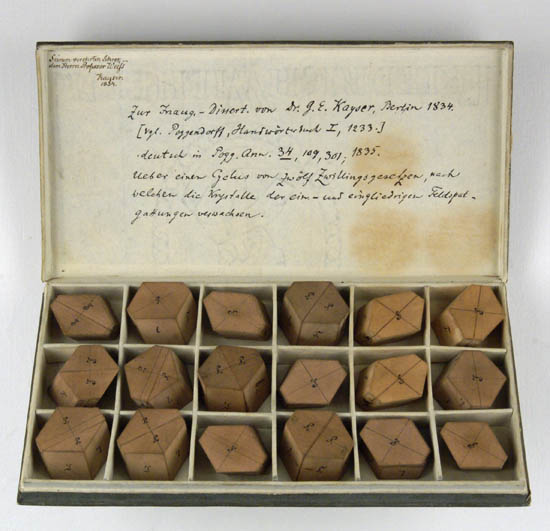 Wooden models of twinned feldspar crystals, G.E. Kayser, Berlin, 1834
Wooden models of twinned feldspar crystals, G.E. Kayser, Berlin, 1834
 Wooden models, Unsigned, late 19th century
Wooden models, Unsigned, late 19th century
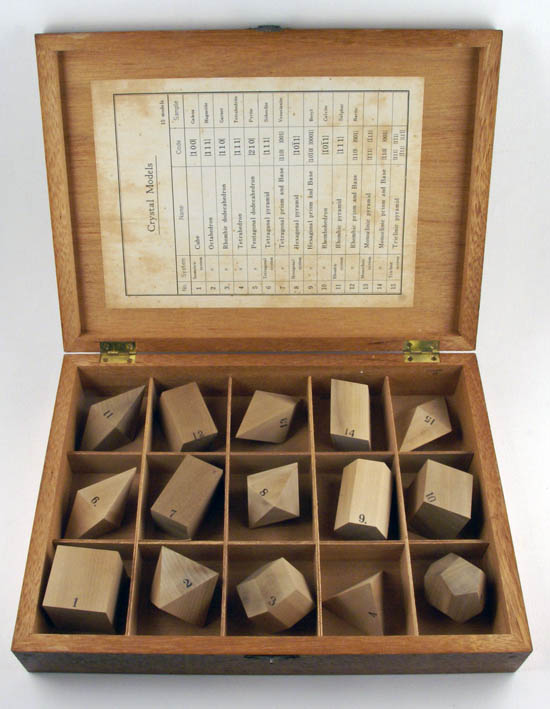 Wooden models, Unsigned, mid 20th century
Wooden models, Unsigned, mid 20th century
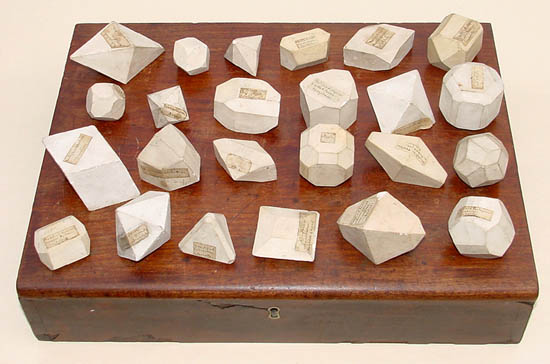 Porcelain models, Unsigned [John Joseph Griffin], England, ca. 1841
Porcelain models, Unsigned [John Joseph Griffin], England, ca. 1841
There are far too many beautiful examples of glass, porcelain and wooden crystal models from the 18th and 19th century to display here — much more information can be found at The Virtual Museum of the History of Mineralogy. These once functional objects have long since been replaced in the teaching of mineralogy by computer models, but their present-day obsolescence only heightens their mysterious and sublime aura. Such interactive sculptures surely must have been seen and relished by the Surrealists, as Taglioni's Jewel Casket by Joseph Cornell reveals. Outside of their scientific context, there is even a prefiguration of minimalist sculpture — an unironic yet non-literal juxtaposition of organic processes and geometric perfection. There is, for me, a fascinating contradiction in the innocence of their toylike size and sentimental presentation given that crystallography — though largely esoteric and academic in its early phases — became the foundation for the most impactful material sciences of chemical and molecular engineering in the twentieth century, as well as the more potentially transfiguring twenty-first century developments in application of topography, virtual three-dimensional modeling systems, rapid prototyping and nanotechnology. The early crystallographic model is the self-anachronistic object par excellance.
Wieliczka Salt Mine
 Saturday, March 13, 2010 at 4:49PM
Saturday, March 13, 2010 at 4:49PM 
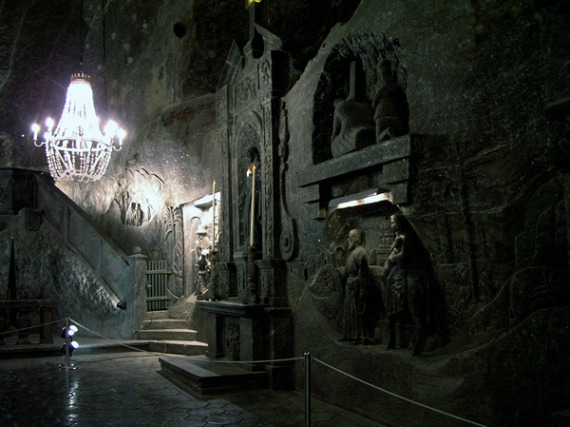
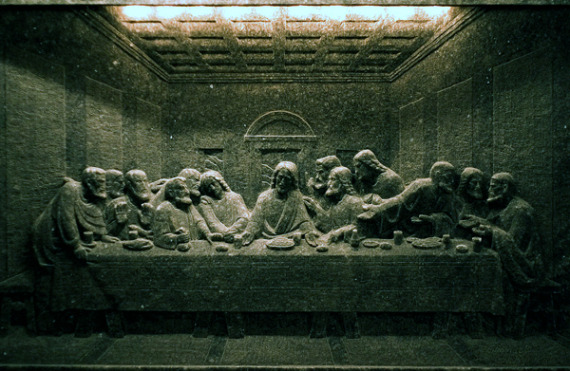

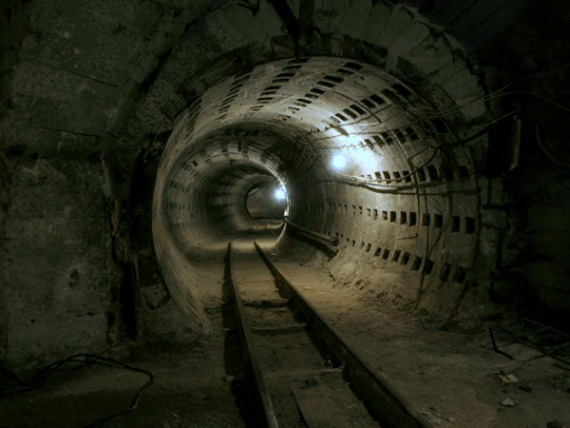
The Wieliczka Salt Mine, near the Polish city of Krakow, is a salt mine that has been in continuous operation since the 13th century, and still is producing table salt today. The mine stretches to a depth of 327 meters and is more than 300 km long. In addition to its purpose as a mine, Wieliczka features a oturist route lined with statues of historical and mythical figures (all of them sculptured out of salt by miners), chambers and chapels lined with salt crystal chandeliers, underground lakes, and exhibits showing the history of salt-mining.
Cueva de los Cristales de Naica
 Saturday, March 13, 2010 at 2:25AM
Saturday, March 13, 2010 at 2:25AM 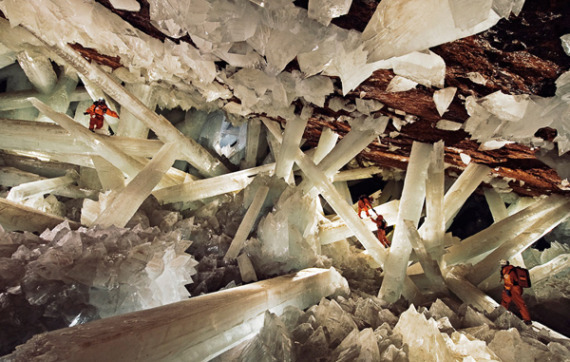
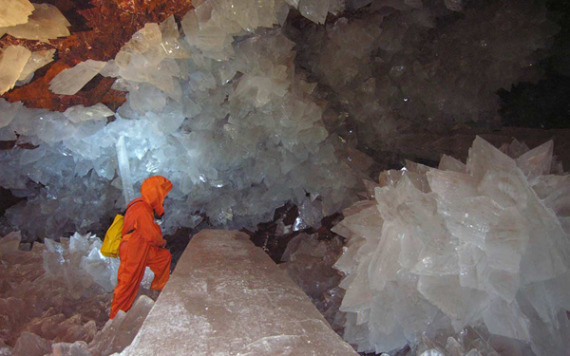
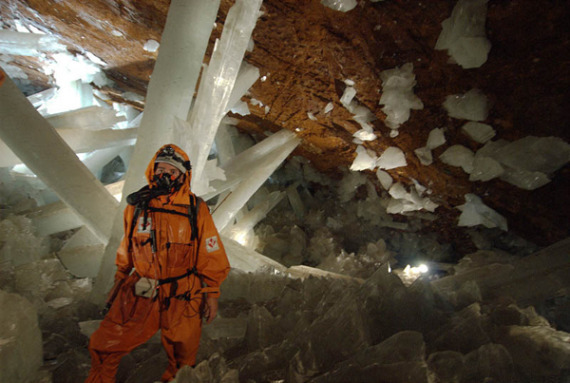
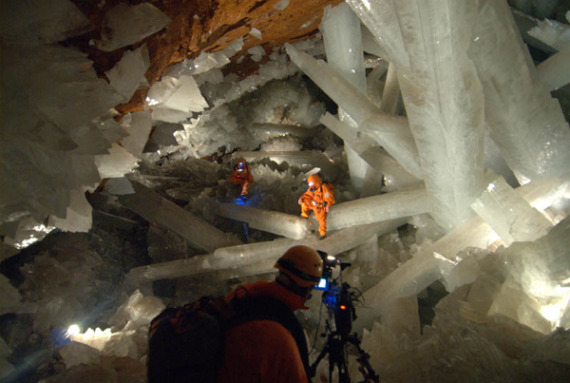
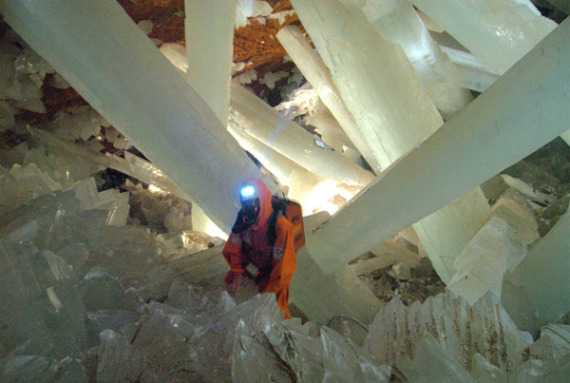
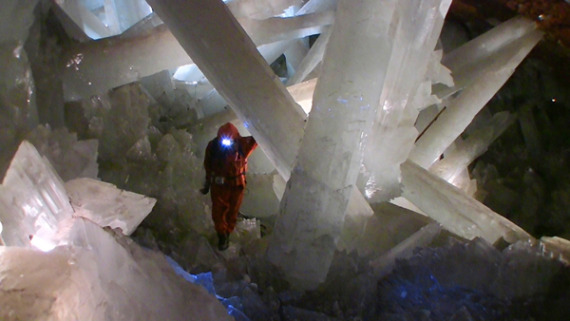
The Crystal Cave was accidentally discovered in 2000 by miners working in the silver and lead mine at Naica, Mexico. It lies almost 300 meters (900 feet) below the surface of the Earth and it contains the largest crystals known in the world, by far. The largest crystals are over 11 meters long (36 feet) and weigh 55 tons. The crystals themselves are made of selenite which is crystallized gypsum, the same material used in drywall construction. Except these crystals formed over a span of about half a million years in a hot water solution, saturated with minerals. The temperature inside the cave remained very consistently hot for the entire time the crystals were growing.





